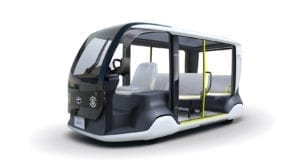Toyota has announced that it will provide a full line-up of electrified vehicles and mobility solutions to support the Tokyo 2020 Olympic and Paralympic Games.
With the Japanese OEM’s electrified fleet, the Tokyo Organising Committee of the Olympic and Paralympic Games aims to achieve the lowest emissions target level of any official fleet used at the Olympic and Paralympic Games.

Toyota will provide around 3,700 mobility products for Tokyo 2020 – the largest fleet for a Games to date – of which some 2,700 vehicles are already commercially available and nearly 90% are electrified. These include hybrid vehicles, 500 fuel-cell electric vehicles, such as the hydrogen-powered Mirai, plug-in hybrid electric vehicles, such as the Prius Prime, and 850 battery-electric vehicles, including the Accessible People Mover, e-Palette and Toyota Concept-i.
According to Toyota, the CO2 emitted by the commercially-available fleet will average less than 80g/km, which is approximately half of the typical amount emitted by a similar sized fleet of mostly conventional gasoline and diesel models. Further reductions are anticipated during the Games when combined with Toyota’s other mobility products and/or electrified vehicles, including bespoke versions of vehicles or vehicles specifically designed for use at the Games.

Furthermore, to help avoid collisions and reduce/mitigate potential damage or injury, all of the commercially-available vehicles for staff transportation support will come equipped with Toyota’s preventative safety technologies, including Toyota Safety Sense and Lexus Safety System +. Additionally, nearly all the commercially-available vehicles will also be equipped with Intelligent Clearance Sonar, designed to assist with braking in the event of unintended misapplication of the acceleration pedal.
Toyota will also support Games operations with other vehicles, including the mass-transit fuel cell bus Sora, assistive vehicles that help lift passengers into their seats or are equipped with an attached slope to allow passengers with wheelchairs access to enter the vehicle via the back door, and other vehicles such as fuel cell forklifts.





